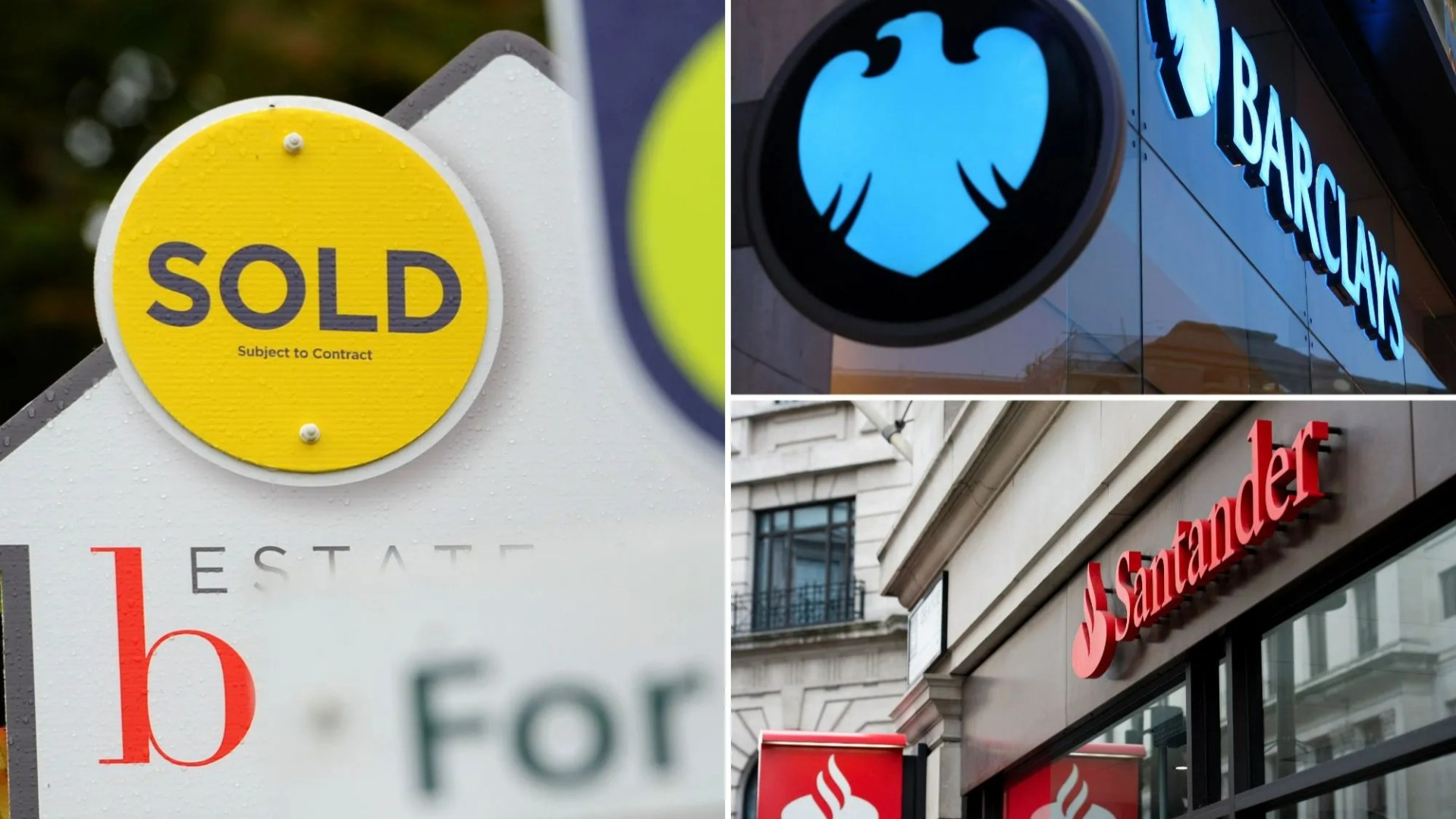Money
Business owners fast-tracking exit plans over CGT concerns


UK business owners have fast-tracked their exit plans over the past 12 months, according to new research from Evelyn Partners.
Nearly one in three (29%) have accelerated business exits in the past year, amid rumours CGT rates could take centre stage in the upcoming Budget.
This is an uplift on the 23% who said 18 months ago that they had brought forward business exits over the previous year.
The research found nearly a quarter (23%) of the 500 business owners with turnovers of upwards of £5m surveyed by Evelyn Partners who had fast-tracked their exits in the last year had done so because of worries about an increase in CGT.
In addition, 20% brought forward business exits over the past 12 months because of fears of potential cuts in IHT reliefs.
The government has ruled out increasing the main rate of corporation tax above 25% and has pledged to freeze headline rates of VAT, income tax and National Insurance in the Budget.
However, the Treasury has remained tight-lipped on the outlook for CGT rates and IHT reliefs, as well as the tax rules around workplace pensions.
Other factors are also at play, with 25% of business owners who had fast-tracked business exits saying they had done so because of personal finance challenges resulting in a need to access the capital tied up in their business.
In addition, 24% brought forward plans due to increased costs of accessing capital as a result of rising interest rates.
Laura Hayward, tax partner at Evelyn Partners, said: “As the countdown to the Budget on 30 October ticks away, we have been contacted by an increasing number of business owners worried about what the chancellor will do to CGT and IHT.
“The prime minister’s statement that the upcoming Budget would be ‘painful’ has put owner-managed businesses on edge and this has prompted many to want to exit as quickly as possible.
“The business environment for many owners has already been tough enough in recent years as they have worked hard to rebuild their businesses after the pandemic, against a backdrop of cost-of-living pressures and high inflation.
“Add to that the potential for unfavourable tax changes in the upcoming Budget and it’s completely understandable that some are hoping to realise the gains of their successes sooner rather than later.
Of those owners who are currently working towards a business exit, family succession (22%) is the most popular strategy followed by establishing an employee ownership trust (16%).
Hayward added: “Whatever strategy is used, exiting a business is a really big decision for business owners and it’s important that they put in place a plan that is appropriate for them and their business.
They need to carefully consider a range of factors, with possible changes to the tax regime being just one aspect.
“Holistic advice considering both the business and personal implications of a sale will help make the exit – which can be fast-tracked if need be – as successful as possible.”
Money
Barclays and Santander make big changes to mortgage interest rates TODAY in blow to borrowers

BARCLAYS and Santander are making a big change to mortgage interest rates today.
As a result, borrowers face a rise in mortgage costs, with both lenders either increasing rates or withdrawing their most affordable deals.
Recent increases in swap rates, which directly affect the cost of fixed-rate mortgages, have led experts to warn of rising mortgage rates amid various uncertainties.
Santander will “temporarily” withdraw its cheapest five-year fixed deal, offering a rate of 3.68% via brokers, at 10pm this evening.
Lenders often do this if there’s a surge in interest because it is the most competitive on the market.
Nicolas Mendes, mortgage technical manager at John Charcol, explained: “Although high demand seems positive, it can strain the lender’s ability to process applications efficiently.
“To maintain good service levels and ensure applications are handled in a timely manner, the lender may need to temporarily withdraw the product to manage their workload.
“Once they catch up, they may reintroduce the product, potentially at the same rate or with adjusted terms.”
We’ve asked Santander if it will increase the rate on this product when it returns to the market.
Meanwhile, Barclays has increased the rates on some of its fixed-rate mortgages.
The bank’s lowest five-year offer for buyers has risen from 3.71% to 3.76% overnight.
However, those looking to remortgage could benefit from a slight reduction, as Barclays’ best five-year remortgage rate has been cut from 3.93% to 3.85%.
Interest rates on home loans had been on a downward trend, leading many homeowners and buyers to anticipate further reductions.
However, experts have cautioned that rates are now climbing due to various uncertainties.
David Hollingworth, associate director at L&C Mortgages, said on Wednesday: “The mortgage market has seen rates fall in recent months, but that may be coming to an abrupt halt.
“Fixed rate pricing depends on what the market anticipates may happen to interest rates and uncertainty over the forthcoming budget, mixed messages from the Bank of England and global unrest is pushing costs back up for lenders.”
As a result, swap rates, which reflect market expectations for future interest rates, have been on the rise.
These directly impact the cost of fixed-rate mortgages, prompting lenders to increase their rates to avoid financial losses.
Smaller lenders, including Coventry Building Society, Co-operative Bank, Molo, and LiveMore, have already responded by raising rates and withdrawing their least cheapest deals.
The two-year swap rate was 4.05% as of October 9, while the five-year swap rate was 3.80%, according to Chatham Financial.
These figures are higher than the respective rates of 3.82% and 3.46% recorded in September.
Why is this happening?
A variety of factors have unsettled market expectations, causing an increase in both gilt yields and swap rates, according to Nicholas Mendes, mortgage technical manager at John Charcol.
He said: “First, Andrew Bailey’s recent comments, in which he indicated expectations for larger or more frequent interest rate reductions, have introduced some uncertainty.”
The Governor of the Bank of England indicated last week that the institution could take a “more aggressive” approach to cutting interest rates.
Currently, interest rates stand at 5%.
The rate, which banks use to determine the interest on mortgages and loans, was last reduced from 5.25% in August.
Andrew Bailey’s comments led a number of leading banks to bring forward predictions for interest rate cuts.
But this sentiment didn’t last for long.
Nicholas said: “Markets had been pricing in interest rate cuts for November and December, but expectations for December have now softened slightly.”
This shift occurred because, just a day later, various members of the Bank of England Monetary Policy Committee (MPC) expressed views contrary to those of Andrew Bailey.
MPC member Huw Pill indicated that rates should be reduced “gradually,” citing caution over the long-term trajectory of inflation.
A similar situation arose at the beginning of the year when mortgage rates initially fell below 4%, only to be increased again as it became apparent that the Bank of England would not reduce rates as swiftly as anticipated.
For now, swap rates will remain uncertain until the Bank of England decides whether to cut interest rates from 5% on November 7.
What does this mean for mortgage holders?
Swap rates primarily influence fixed-rate mortgages.
As a result, these are the main products that lenders are currently increasing.
Those on standard variable and tracker deals remain unaffected, as these mortgages are tied to the Bank of England’s base rate, which has not changed.
If you are already locked into a fixed-rate deal, you will also be unaffected.
However, the rise in fixed rates will be a significant blow to prospective homebuyers and those looking to remortgage.
According to the banking trade body UK Finance, approximately 1.6 million mortgage deals are set to expire in 2024.
This means that over a million households also face the prospect of their monthly payments increasing by hundreds of pounds.
According to moneyfactscompare.co.uk, the average two year fixed rate homeowner mortgage stands at 5.37%.
This is down from an average rate of 5.56% last month.
Meanwhile, the average five-year fixed residential mortgage rate is 5.21%, a decrease from 5.37% the previous month.
How to get the best deal on your mortgage
IF you’re looking for a traditional type of mortgage, getting the best rates depends entirely on what’s available at any given time.
There are several ways to land the best deal.
Usually the larger the deposit you have the lower the rate you can get.
If you’re remortgaging and your loan-to-value ratio (LTV) has changed, you’ll get access to better rates than before.
Your LTV will go down if your outstanding mortgage is lower and/or your home’s value is higher.
A change to your credit score or a better salary could also help you access better rates.
And if you’re nearing the end of a fixed deal soon it’s worth looking for new deals now.
You can lock in current deals sometimes up to six months before your current deal ends.
Leaving a fixed deal early will usually come with an early exit fee, so you want to avoid this extra cost.
But depending on the cost and how much you could save by switching versus sticking, it could be worth paying to leave the deal – but compare the costs first.
To find the best deal use a mortgage comparison tool to see what’s available.
You can also go to a mortgage broker who can compare a much larger range of deals for you.
Some will charge an extra fee but there are plenty who give advice for free and get paid only on commission from the lender.
You’ll also need to factor in fees for the mortgage, though some have no fees at all.
You can add the fee – sometimes more than £1,000 – to the cost of the mortgage, but be aware that means you’ll pay interest on it and so will cost more in the long term.
You can use a mortgage calculator to see how much you could borrow.
Remember you’ll have to pass the lender’s strict eligibility criteria too, which will include affordability checks and looking at your credit file.
You may also need to provide documents such as utility bills, proof of benefits, your last three month’s payslips, passports and bank statements.
Money
Value of living sectors set to more than double by 2029, BNP Paribas RE predicts

Growth will depend on supportive planning policies, development viability, data transparency, and improved sector liquidity, BNP Paribas said.
This article is for subscribers or registered users only
Already registered? please Log in to continue
TRY 6 ISSUES FOR JUST £6
Try 6 issues of Property Week for £6 to finish this article.
Sign up now for the following benefits:
- Unlimited access to Property Week and newsletters
- Breaking news, comment and analysis from industry experts as it happens

Don’t want full access? REGISTER NOW for limited access and to subscribe to our newsletters.
Already registered or subscribed? SIGN IN here to continue
Check if you already have access from your company or university
Money
Consolidation of consolidators will not be a ‘dramatic shift’


If the consolidation of consolidators mooted for the advice space happens, it will unlikely be a “dramatic shift” in the market, NextWealth consulting director Emma Napier has suggested.
Napier told Money Marketing she believes consolidation of consolidators could happen, but it is not going to be a “great big turn” for the industry.
“It comes down to the process that a consolidator has managed to embed,” she said. “The consolidation of consolidators will only occur if the seller finds the process [of buying small advice firms] too slow and needs to recapitalise, and the buyer can quickly see a clear route to market.
“This is more likely if most of the work is already done, there’s a proven model, it makes sense to proceed, and the buyer still has cash available.
“It’s more about the availability of capital rather than the market shrinking because consolidators are buying other consolidators.”
She pointed out that the same thing happened with platforms about five to 10 years ago.
“While a few consolidated and rebranded, the big consolidation never really occurred,” she added.
Behind the Headlines: FCA consolidation review is a ‘wake-up call’ for buyers and sellers
“I think we’ll see a similar situation with consolidators. From a business perspective, if it makes sense, it shouldn’t be a surprise.”
The Financial Conduct Authority has set its sights on the consolidator model and, earlier this week, said it would launch a review of consolidation in the advice space.
“It’s an area of the market that they should be looking at, not because there are concerns, but there has been a huge shift in the dynamics of the industry itself and how it’s chopped up,” said Napier.
“If those shapes of sections of the industry are changing, then [the FCA] should be aware of it, and also the dynamics and the intentions behind it.”
She said that last year, there was a “definite shift” in the number of firms being acquired by the acquirers.
“If I was a regulator, I’d want to know how those dynamics are working.”
Napier added: “If you’re a consolidator, it doesn’t matter who you’re consolidating and what your proposition is, you’ve got to integrate the tech and the people with a focus on the end customer.
“It can be a minefield in all sorts of businesses. Some people are good at it, some people have nailed it, and some people are still struggling with it.”
Money
Shopper outrage as major fashion brands including Debenhams and Warehouse start charging surprise fee

A HOST of fashion labels have changed their returns policy so customers subscribing to their premium service must pay for returns.
Debenhams, Dorothy Perkins, Oasis, Coast and Warehouse – which are all part of the same group and share the same “Unlimited” delivery service – used to offer members free returns, but since June charge £1.99 per order.
Unlimited membership, which costs £14.99 a year, gives customers access to next day deliveries for all the brands named above, plus Burton, Misspap and Wallis .
The change has outraged subscribers, who were taken by surprise when they found out about the fee.
One shopper who took to the Trustpilot site to comment on Dorothy Perkins’ service said: “Since when have you started charging Delivery Pass customers £1.99 to return items?
“If you have started to charge for returns then I certainly will not be renewing my pass with you.”
Another added: “Regular customer for many years now and on unlimited subscription.
“Had to return a size 12 dress more like a size 18 only to be told 1.99 for returns label.
“Will not be buying again, waste of money.”
Another Warehouse Unlimited customer complained of being charged £1.99, even though this fee was not in place when he had subscribed.
Karen Millen – another brand owned by the Boohoo Group – has similarly changed its Premier service so that members, who pay £14.99 a year, must pay £2 per return.
However, according to the terms and conditions, those who purchased Premier unlimited delivery before June 3 will continue to receive free returns until their subscriptions end.
Any new Premier customers from June 3 will be charged £2 for returns.
But, for subscribers to Debenhams Unlimited and all of the brands under that label, the fee has come into effect immediately.
Sun Online revealed in September how members of Boohoo Premier – another premium delivery service operated by the Boohoo Group – were also told to pay £1.99 per return, but it has since reneged and made them free again.
Louise Deglise-Favre, retail analyst at GlobalData, said the introduction of returns fees was likely done to boost its profits, leaving some feeling cheated.
YOUR RETURN RIGHTS EXPLAINED
THE SUN’S Head of Consumer, Tara Evans, explains your return rights:
YOUR right to return items depends on where you purchased it and why you want to return it.
If you bought an item online then you are covered by the Consumer Contracts Regulations, which means you can cancel an item 14 days from when you receive it.
You then have a further 14 days to return the item, once you’ve notified the retailer that you want to return it.
If an item is faulty – regardless of how you bought it – you are legally able to return it and get a full refund within 30 days of receiving it.
Most retailers have their own returns policies, offering an exchange, refund or credit.
Shops don’t have to have these policies by law, but if they do have one then they should stick to it.
She added: “The group has been experiencing major issues in the past couple of years, unable to compete with new competitors such as Shein in terms of agility and breadth of choice.
“Besides, the group bought the majority of the brands mentioned here during the height of its success throughout the pandemic.
“However, these brands were already experiencing difficulties and the boohoo Group likely has not been able to turn their favours around despite a change in branding and product offering.”
The Boohoo Group did not comment.
STORE RETURN CHARGES
PrettyLittleThing recently implemented a charge of £1.99 per item returned.
In February, River Island angered customers by introducing a £2 charge to return items ordered online.
The retailer also said it would ban some customer accounts if they made too many returns.
The charge is deducted from the total amount refunded after the customer has posted back the items.
And H&M brought in a £1.99 fee in September last year.
Before that Boohoo also began the practise in July 2022, but it continues to offer free returns for its “premier” customers.
In May 2022, fashion chain Zara introduced a fee for those looking to bring back parcels, it now charges £1.95 for the service.
Next gives customers 14 days to return their orders, but still charges £2.50 to take them back.
A host of retailers including Mountain Warehouse, THG and Moss Bros have also added a charge for shoppers to return items bought online.
Companies have started to charge for returns as the costs of shipping have risen.
The cost of processing is also higher.
Retailers with stores can make it easier for consumers to return goods for free as they can be dropped off in a store, which saves the shipping charges.
Which retailers don’t charge for returns?
DESPITE the trend towards charging, there are still lots of high street names that offer free returns.
Amazon says that it offers free returns for most items that are sent back within 30 days as long as they are unused and undamaged.
It adds that most of its sellers do the same. Often, a free returns label is included with your package.
It says that it will issue a refund for a product shipped by Amazon, within a maximum of 14 days and confirm it with an automated e-mail.
Argos offers free returns for most of the things that it sells.
Apple says you can return purchases within 14 days for free. The product must be in its original condition with all of its parts, accessories, and packaging.
Asda has a generous online returns policy, where most things can be returned within 30 days if you change your mind. You need to show proof of purchase.
M&S’ standard returns policy is 35 days for both online and in-store purchases, except sale items, which must be returned within 14 days.
Clothing or homeware items can only be returned at main clothing and home stores and outlet items can also only be returned to outlet stores.
ASOS says that returns in the UK are free and trackable, as long as you don’t fall foul of its “fair use policy” and you return things within 28 days.
It says that for the small group of customers who consistently take actions that make providing them with free returns unsustainable, it deducts and retains £3.95 from their refund to help cover the cost of getting the goods back.
Money
Former Cairn Homes CFO joins Bellway

Doherty will join Bellway on 2 December as CFO and will be appointed as a member of the board.
The post Former Cairn Homes CFO joins Bellway appeared first on Property Week.
Money
Warning for 335,000 taxpayers ahead of key HMRC deadline including Vinted and eBay sellers – do you need to act?

THOUSANDS of taxpayers have been warned not to miss a fast-approaching HMRC deadline or they could face fines of £100.
There are just three weeks left to submit a paper self-assessment tax return with the final cut-off point on October 31.
The assessment is used by the government body to collect income tax.
This tax is usually deducted automatically from people’s wages, pensions and savings.
However, people and businesses with extra income must report it in a tax return.
Many people choose to complete this process online through the HMRC website as the online deadline is not until January 31, 2025.
But if you want to submit your tax return via the post you must complete it by October 31.
In some instances submitting a physical tax return is your only option, especially if you need to fill in the foreign income and gains, or the trust and estate pages.
This is because these forms are not available online.
If you sell clothes or other items on websites such as eBay or Vinted you might want to make note of the date.
That is because since the beginning of 2024, firms like Vinted have to pass on customer data to HMRC if a user sells 30 or more items, or earns over £1,700, in a year.
While the reporting rules have changed, this is not a new tax.
Those who earn more than £1,000 outside their regular employment were already required to file a Self Assessment tax form with HMRC.
It is worth bearing in mind that HMRC will fine you for failing to file your return by the deadline.
Then, a £10 daily fine applies every day you don’t submit your tax return.
Alastair Douglas, chief executive of TotallyMoney said it is important people do not get “caught out”.
The financial professional said people struggling with learning difficulties such as autism or dyslexia should contact HMRC’s extra support team for assistance.
He explained: “They’re specially trained, and can guide you through the process with a video appointment or phone call — you’ll just need to mention your situation when contacting the HMRC helpline or webchat.”
Do I have to pay tax on my second-hand sales?
Sellers on apps such as eBay and Vinted my be required to pay tax.
If you have made 30 sales or £1,700 this year you will be contacted by Vinted and asked to submit the seller report form on the app.
This year, the company said it will only approach new sellers who registered in 2024.
If you do not hear from Vinted then you don’t need to do anything, though you may need to file a tax return for other reasons separately.
Users who meet the criteria will be asked to add their National Insurance Number to a pre-filled form and check the details are correct before submitting it.
This will be done on the Vinted app.
You don’t need to calculate or count anything yourself.
A Vinted spokesperson said: “Reporting members’ details to the authorities does not necessarily lead to taxation.
“Taxation is a separate matter that doesn’t depend on HMRC reporting.”
They added: “HMRC requires Vinted to collect information from members who meet the criteria mentioned above, regardless of whether or not their earnings are taxable.”
Vinted said that it will be getting in contact with users who need to fill out these forms towards the end of the year.
What that means in practice is that money you make may be reported to the taxman if it’s over the amounts above.
Whether or not you have to pay tax will depend on your wider circumstances.
The majority of people pay income tax automatically through employment via what’s known as PAYE.
How do I file a tax return?
TO file a self assessment tax retun, you’ll need to register with HMRC first, which will then issue you with a Unique Taxpayer Reference (UTR).
You must register for self assessment by October 5 if you have to file a tax return and you have not sent one before.
You can do so by visiting www.gov.uk/register-for-self-assessment.
If you’ve previously registered and already have a UTR, you don’t need to go through this step again.
Once you’ve got your UTR, you can sign in via the “Self Assessment tax return” section of HMRC’s website by visiting www.gov.uk/log-in-file-self-assessment-tax-return.
You can then file your self assessment tax return online.
The deadline for sending a return online is January 31 every year.
If you need a paper copy of the main Self Assessment tax return, call HMRC on 03000 200 3610 and request an SA100 form.
The deadline for sending a return using a paper form is October 31 every year.
You need to pay the tax you owe by midnight on January 31 each year.
HMRC accepts your payment on the date you make it, not the date it reaches its account.
File late and HMRC will issue you with a fine.
-

 Science & Environment3 weeks ago
Science & Environment3 weeks agoHow to unsnarl a tangle of threads, according to physics
-

 Science & Environment3 weeks ago
Science & Environment3 weeks agoHyperelastic gel is one of the stretchiest materials known to science
-

 Technology3 weeks ago
Technology3 weeks agoWould-be reality TV contestants ‘not looking real’
-

 Womens Workouts3 weeks ago
Womens Workouts3 weeks ago3 Day Full Body Women’s Dumbbell Only Workout
-

 Science & Environment3 weeks ago
Science & Environment3 weeks agoMaxwell’s demon charges quantum batteries inside of a quantum computer
-

 Science & Environment3 weeks ago
Science & Environment3 weeks ago‘Running of the bulls’ festival crowds move like charged particles
-

 Science & Environment3 weeks ago
Science & Environment3 weeks agoLiquid crystals could improve quantum communication devices
-

 Science & Environment3 weeks ago
Science & Environment3 weeks agoQuantum ‘supersolid’ matter stirred using magnets
-
News4 weeks ago
the pick of new debut fiction
-

 Science & Environment3 weeks ago
Science & Environment3 weeks agoITER: Is the world’s biggest fusion experiment dead after new delay to 2035?
-

 Science & Environment3 weeks ago
Science & Environment3 weeks agoHow to wrap your mind around the real multiverse
-

 Science & Environment3 weeks ago
Science & Environment3 weeks agoSunlight-trapping device can generate temperatures over 1000°C
-

 Science & Environment3 weeks ago
Science & Environment3 weeks agoWhy this is a golden age for life to thrive across the universe
-

 News3 weeks ago
News3 weeks agoOur millionaire neighbour blocks us from using public footpath & screams at us in street.. it’s like living in a WARZONE – WordupNews
-

 Science & Environment3 weeks ago
Science & Environment3 weeks agoQuantum forces used to automatically assemble tiny device
-

 Science & Environment3 weeks ago
Science & Environment3 weeks agoNerve fibres in the brain could generate quantum entanglement
-

 Science & Environment2 weeks ago
Science & Environment2 weeks agoX-rays reveal half-billion-year-old insect ancestor
-

 Science & Environment3 weeks ago
Science & Environment3 weeks agoPhysicists are grappling with their own reproducibility crisis
-

 News4 weeks ago
News4 weeks ago▶️ Hamas in the West Bank: Rising Support and Deadly Attacks You Might Not Know About
-

 Science & Environment3 weeks ago
Science & Environment3 weeks agoTime travel sci-fi novel is a rip-roaringly good thought experiment
-

 Science & Environment3 weeks ago
Science & Environment3 weeks agoLaser helps turn an electron into a coil of mass and charge
-

 Science & Environment3 weeks ago
Science & Environment3 weeks agoNuclear fusion experiment overcomes two key operating hurdles
-

 Technology2 weeks ago
Technology2 weeks agoIs sharing your smartphone PIN part of a healthy relationship?
-
Business2 weeks ago
Eurosceptic Andrej Babiš eyes return to power in Czech Republic
-

 Science & Environment3 weeks ago
Science & Environment3 weeks agoCaroline Ellison aims to duck prison sentence for role in FTX collapse
-

 Science & Environment3 weeks ago
Science & Environment3 weeks agoA slight curve helps rocks make the biggest splash
-

 News3 weeks ago
News3 weeks agoYou’re a Hypocrite, And So Am I
-

 Sport3 weeks ago
Sport3 weeks agoJoshua vs Dubois: Chris Eubank Jr says ‘AJ’ could beat Tyson Fury and any other heavyweight in the world
-

 News3 weeks ago
News3 weeks ago▶️ Media Bias: How They Spin Attack on Hezbollah and Ignore the Reality
-

 Technology2 weeks ago
Technology2 weeks ago‘From a toaster to a server’: UK startup promises 5x ‘speed up without changing a line of code’ as it plans to take on Nvidia, AMD in the generative AI battlefield
-

 Football2 weeks ago
Football2 weeks agoFootball Focus: Martin Keown on Liverpool’s Alisson Becker
-

 News4 weeks ago
News4 weeks agoNew investigation ordered into ‘doorstep murder’ of Alistair Wilson
-

 Science & Environment3 weeks ago
Science & Environment3 weeks agoRethinking space and time could let us do away with dark matter
-
News3 weeks ago
The Project Censored Newsletter – May 2024
-

 Technology2 weeks ago
Technology2 weeks agoQuantum computers may work better when they ignore causality
-
Business2 weeks ago
Should London’s tax exiles head for Spain, Italy . . . or Wales?
-

 MMA2 weeks ago
MMA2 weeks agoConor McGregor challenges ‘woeful’ Belal Muhammad, tells Ilia Topuria it’s ‘on sight’
-

 Sport2 weeks ago
Sport2 weeks agoWatch UFC star deliver ‘one of the most brutal knockouts ever’ that left opponent laid spark out on the canvas
-

 Science & Environment3 weeks ago
Science & Environment3 weeks agoA new kind of experiment at the Large Hadron Collider could unravel quantum reality
-

 Science & Environment3 weeks ago
Science & Environment3 weeks agoFuture of fusion: How the UK’s JET reactor paved the way for ITER
-

 News3 weeks ago
News3 weeks agoIsrael strikes Lebanese targets as Hizbollah chief warns of ‘red lines’ crossed
-

 Technology2 weeks ago
Technology2 weeks agoGet ready for Meta Connect
-
Business1 week ago
Ukraine faces its darkest hour
-

 Health & fitness3 weeks ago
Health & fitness3 weeks agoThe secret to a six pack – and how to keep your washboard abs in 2022
-

 Science & Environment3 weeks ago
Science & Environment3 weeks agoWhy we need to invoke philosophy to judge bizarre concepts in science
-

 Science & Environment3 weeks ago
Science & Environment3 weeks agoA tale of two mysteries: ghostly neutrinos and the proton decay puzzle
-

 Science & Environment3 weeks ago
Science & Environment3 weeks agoUK spurns European invitation to join ITER nuclear fusion project
-

 Health & fitness2 weeks ago
Health & fitness2 weeks agoThe 7 lifestyle habits you can stop now for a slimmer face by next week
-

 Technology3 weeks ago
Technology3 weeks agoThe ‘superfood’ taking over fields in northern India
-

 CryptoCurrency3 weeks ago
CryptoCurrency3 weeks agoCardano founder to meet Argentina president Javier Milei
-
Politics3 weeks ago
UK consumer confidence falls sharply amid fears of ‘painful’ budget | Economics
-

 MMA3 weeks ago
MMA3 weeks agoRankings Show: Is Umar Nurmagomedov a lock to become UFC champion?
-

 News3 weeks ago
News3 weeks agoWhy Is Everyone Excited About These Smart Insoles?
-

 Science & Environment3 weeks ago
Science & Environment3 weeks agoMeet the world's first female male model | 7.30
-

 News3 weeks ago
News3 weeks agoFour dead & 18 injured in horror mass shooting with victims ‘caught in crossfire’ as cops hunt multiple gunmen
-

 Womens Workouts3 weeks ago
Womens Workouts3 weeks ago3 Day Full Body Toning Workout for Women
-

 Technology2 weeks ago
Technology2 weeks agoRobo-tuna reveals how foldable fins help the speedy fish manoeuvre
-

 News4 weeks ago
News4 weeks agoHow FedEx CEO Raj Subramaniam Is Adapting to a Post-Pandemic Economy
-

 Health & fitness3 weeks ago
Health & fitness3 weeks agoThe maps that could hold the secret to curing cancer
-

 Science & Environment3 weeks ago
Science & Environment3 weeks agoBeing in two places at once could make a quantum battery charge faster
-

 CryptoCurrency3 weeks ago
CryptoCurrency3 weeks agoLow users, sex predators kill Korean metaverses, 3AC sues Terra: Asia Express
-

 Womens Workouts3 weeks ago
Womens Workouts3 weeks agoBest Exercises if You Want to Build a Great Physique
-

 Womens Workouts3 weeks ago
Womens Workouts3 weeks agoEverything a Beginner Needs to Know About Squatting
-

 TV3 weeks ago
TV3 weeks agoCNN TÜRK – 🔴 Canlı Yayın ᴴᴰ – Canlı TV izle
-

 Science & Environment3 weeks ago
Science & Environment3 weeks agoCNN TÜRK – 🔴 Canlı Yayın ᴴᴰ – Canlı TV izle
-

 Servers computers2 weeks ago
Servers computers2 weeks agoWhat are the benefits of Blade servers compared to rack servers?
-

 Technology2 weeks ago
Technology2 weeks agoThe best robot vacuum cleaners of 2024
-
Business3 weeks ago
JPMorgan in talks to take over Apple credit card from Goldman Sachs
-

 Science & Environment3 weeks ago
Science & Environment3 weeks agoQuantum time travel: The experiment to ‘send a particle into the past’
-

 CryptoCurrency3 weeks ago
CryptoCurrency3 weeks agoDecentraland X account hacked, phishing scam targets MANA airdrop
-

 CryptoCurrency3 weeks ago
CryptoCurrency3 weeks agoBitcoin miners steamrolled after electricity thefts, exchange ‘closure’ scam: Asia Express
-

 CryptoCurrency3 weeks ago
CryptoCurrency3 weeks agoDorsey’s ‘marketplace of algorithms’ could fix social media… so why hasn’t it?
-

 CryptoCurrency3 weeks ago
CryptoCurrency3 weeks agoDZ Bank partners with Boerse Stuttgart for crypto trading
-

 Science & Environment3 weeks ago
Science & Environment3 weeks agoMost accurate clock ever can tick for 40 billion years without error
-

 CryptoCurrency3 weeks ago
CryptoCurrency3 weeks agoBitcoin bulls target $64K BTC price hurdle as US stocks eye new record
-

 Science & Environment3 weeks ago
Science & Environment3 weeks agoHow one theory ties together everything we know about the universe
-

 News3 weeks ago
News3 weeks agoChurch same-sex split affecting bishop appointments
-

 Science & Environment3 weeks ago
Science & Environment3 weeks agoTiny magnet could help measure gravity on the quantum scale
-

 CryptoCurrency3 weeks ago
CryptoCurrency3 weeks agoBlockdaemon mulls 2026 IPO: Report
-

 Sport3 weeks ago
Sport3 weeks agoUFC Edmonton fight card revealed, including Brandon Moreno vs. Amir Albazi headliner
-
Business3 weeks ago
Thames Water seeks extension on debt terms to avoid renationalisation
-

 CryptoCurrency3 weeks ago
CryptoCurrency3 weeks agoEthereum is a 'contrarian bet' into 2025, says Bitwise exec
-

 CryptoCurrency3 weeks ago
CryptoCurrency3 weeks agoCoinbase’s cbBTC surges to third-largest wrapped BTC token in just one week
-
Politics3 weeks ago
‘Appalling’ rows over Sue Gray must stop, senior ministers say | Sue Gray
-

 News2 weeks ago
News2 weeks agoUS Newspapers Diluting Democratic Discourse with Political Bias
-

 Politics3 weeks ago
Politics3 weeks agoTrump says he will meet with Indian Prime Minister Narendra Modi next week
-

 Science & Environment3 weeks ago
Science & Environment3 weeks agoPhysicists have worked out how to melt any material
-

 CryptoCurrency3 weeks ago
CryptoCurrency3 weeks agoRedStone integrates first oracle price feeds on TON blockchain
-

 CryptoCurrency3 weeks ago
CryptoCurrency3 weeks ago‘No matter how bad it gets, there’s a lot going on with NFTs’: 24 Hours of Art, NFT Creator
-

 Science & Environment3 weeks ago
Science & Environment3 weeks agoHow do you recycle a nuclear fusion reactor? We’re about to find out
-
Business3 weeks ago
How Labour donor’s largesse tarnished government’s squeaky clean image
-

 Technology3 weeks ago
Technology3 weeks agoiPhone 15 Pro Max Camera Review: Depth and Reach
-

 News3 weeks ago
News3 weeks agoBrian Tyree Henry on voicing young Megatron, his love for villain roles
-

 News3 weeks ago
News3 weeks agoBrian Tyree Henry on voicing young Megatron, his love for villain roles
-

 Travel2 weeks ago
Travel2 weeks agoDelta signs codeshare agreement with SAS
-

 Politics2 weeks ago
Politics2 weeks agoHope, finally? Keir Starmer’s first conference in power – podcast | News
-

 CryptoCurrency3 weeks ago
CryptoCurrency3 weeks agoLouisiana takes first crypto payment over Bitcoin Lightning
-

 CryptoCurrency3 weeks ago
CryptoCurrency3 weeks agoCrypto scammers orchestrate massive hack on X but barely made $8K
-

 CryptoCurrency3 weeks ago
CryptoCurrency3 weeks agoTelegram bot Banana Gun’s users drained of over $1.9M
-

 CryptoCurrency3 weeks ago
CryptoCurrency3 weeks agoSEC asks court for four months to produce documents for Coinbase




You must be logged in to post a comment Login